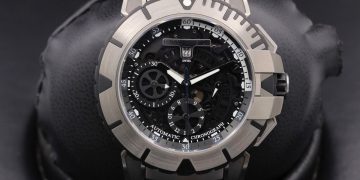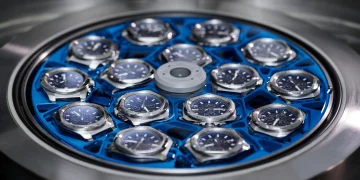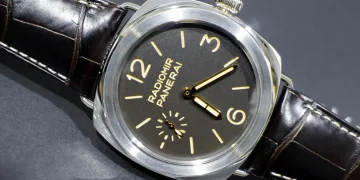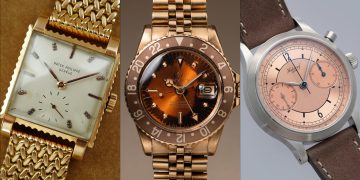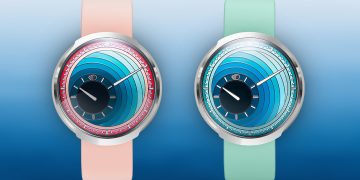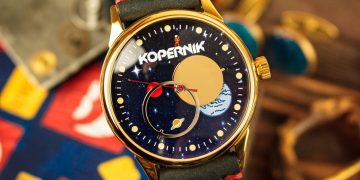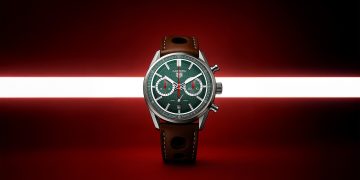Introduction: The Allure of the Tourbillon in Watchmaking
- Overview of the Tourbillon
Briefly introduce the tourbillon complication, explaining its origin and invention by Abraham-Louis Breguet in the 18th century. Discuss how it was created as a solution to improve the accuracy of pocket watches by compensating for the effects of gravity on the balance wheel and escapement. Even though modern technology has reduced the necessity for tourbillons, the complication still holds immense cultural significance in the watchmaking world. - Purpose of the Article
This article will explore the culture, symbolism, and lasting influence of tourbillon watches, delving into their impact on watchmaking, collectors, and the luxury market. It will also discuss how the tourbillon has shaped the evolution of horology and continues to inspire both enthusiasts and manufacturers.
1. The Evolution of the Tourbillon: From Technical Innovation to Cultural Icon
- The Origins of the Tourbillon
Begin with the story of Abraham-Louis Breguet and his invention of the tourbillon. Discuss how he first conceived the idea in the 1790s and how it revolutionized the way timekeeping devices were made, especially with regard to the precision of pocket watches. Introduce Breguet’s own contributions to horology and how his invention came to symbolize the pinnacle of mechanical innovation at the time. - The Role of the Tourbillon in the Golden Age of Watchmaking
Highlight the cultural significance of the tourbillon in the late 18th and early 19th centuries. Explain how it became a symbol of status, sophistication, and craftsmanship in the world of high-end timepieces. Watchmakers and their clients viewed the tourbillon as a mark of excellence, and the complication was primarily limited to the elite and wealthy. - The Tourbillon in Modern Times: Symbol of Prestige
Transition to the 20th and 21st centuries, explaining how the tourbillon, despite its decreased practical necessity in modern watchmaking, still represents luxury and status. Discuss how brands use the tourbillon not only for its mechanical complexity but also as a marketing tool to elevate the brand’s prestige. Despite advancements in quartz technology and the rise of digital timekeeping, the tourbillon has maintained a sacred place in the culture of haute horlogerie (high-end watchmaking).
2. The Influence of Tourbillon Watches on Watchmaking and Innovation
- Advancing Watchmaking Craftsmanship
One of the most significant ways the tourbillon has influenced the watch industry is by pushing the boundaries of mechanical watchmaking. Explain how the tourbillon’s intricate design and the craftsmanship required to assemble it has led to advancements in watchmaking. Watchmakers have continuously refined the tourbillon, experimenting with new materials, complications, and mechanisms to improve its performance. - Tourbillons as a Showcase of Watchmaking Mastery
Discuss how the presence of a tourbillon within a watch movement is a demonstration of a watchmaker’s skill and technical mastery. Watchmakers often spend weeks or even months creating and fine-tuning a single tourbillon, making it a true test of their craftsmanship. For this reason, the tourbillon has become a status symbol in the world of luxury watches. - Materials and Innovations Inspired by the Tourbillon
Explore how the pursuit of perfection in tourbillon design has inspired technological innovations in the materials used in watches. For example, the adoption of silicon components (such as the balance spring or escapement) has been influenced by the precision required in tourbillons. Discuss how these advancements have shaped the entire watchmaking industry, benefiting not just tourbillons, but mechanical watches in general. - Tourbillon as a Centerpiece of Haute Horlogerie
Tourbillons have become a focal point in some of the most prestigious and complex watches in the world. Brands like Patek Philippe, Audemars Piguet, Jaeger-LeCoultre, and Vacheron Constantin have used the tourbillon to showcase their technical expertise. Many of these watches have become highly sought-after by collectors and enthusiasts, further solidifying the tourbillon’s status as a symbol of luxury and exclusivity.
3. The Cultural Impact of Tourbillon Watches on Collectors and Enthusiasts
- Tourbillons as Collectible Art
Tourbillon watches are often viewed not just as timepieces but as artistic expressions. Discuss how collectors, especially those in the luxury watch market, view tourbillons as highly collectible items, appreciating their beauty, craftsmanship, and exclusivity. Highlight the role of auction houses and high-profile collectors who contribute to the mystique of these watches by acquiring rare and limited-edition tourbillons. - The Psychological Allure of the Tourbillon
Delve into the psychological appeal of owning a tourbillon watch. The rarity, complexity, and price tag of these timepieces often create a sense of pride, accomplishment, and distinction for the owner. Discuss how the tourbillon represents the wearer’s taste for luxury, their appreciation for fine craftsmanship, and their desire to own a piece of watchmaking history. - The Tourbillon as a Status Symbol
Explore how the tourbillon is intertwined with social and cultural concepts of status. Owning a tourbillon, especially from a prestigious brand, is often seen as a way to demonstrate wealth, success, and discerning taste. Examine how the watch industry has used this perception to market tourbillons to the ultra-wealthy. - The Influence of Social Media and Modern Watch Communities
The rise of social media platforms like Instagram, YouTube, and watch-focused online communities (e.g., Watchuseek, Reddit’s r/Watches), has fueled the popularity and appreciation of tourbillon watches. Examine how watch influencers, collectors, and online discussions have brought attention to the beauty and technical prowess of tourbillons. These platforms help spread the culture of high-end watchmaking to a broader, younger audience.
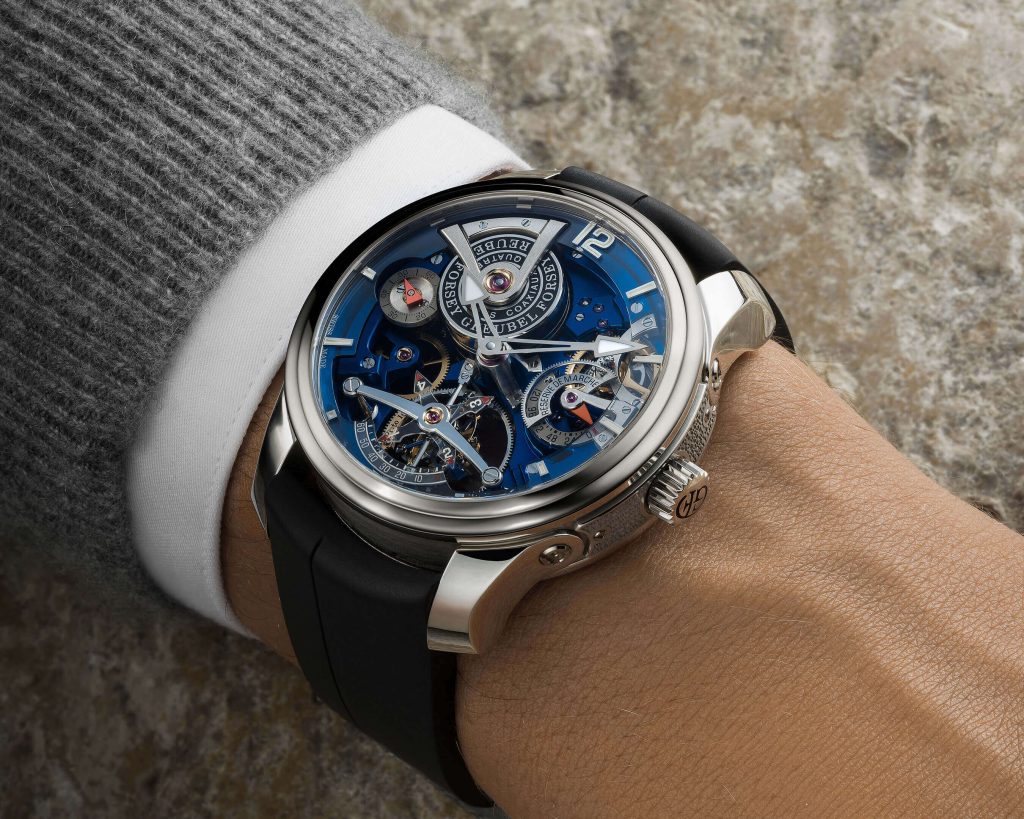
4. The Commercialization of Tourbillons and Their Influence on the Luxury Market
- Tourbillons in Mass Production and Limited Editions
Initially, tourbillons were handcrafted by the finest independent watchmakers and luxury houses. Today, however, many brands have created their own tourbillons, which are produced in limited quantities to ensure exclusivity. Discuss the balance between exclusivity and mass production and how it has affected the culture of luxury watches. - The Rising Popularity of Affordable Tourbillons
Over time, some manufacturers have found ways to produce tourbillons at more accessible price points. While they may not have the same level of craftsmanship as those from elite brands, these more affordable models have helped democratize access to the tourbillon complication. Discuss how this has made tourbillons more attainable to a wider range of collectors, while also diluting the exclusivity of the complication to some extent. - Luxury Watch Brands and Their Branding Strategies
Examine how different luxury watch brands have positioned themselves in the tourbillon market. Discuss how brands like Breguet, Audemars Piguet, and Patek Philippe have capitalized on the tourbillon to further solidify their reputations. These brands leverage the tourbillon to create an aura of tradition, craftsmanship, and elegance, all of which appeal to the ultra-wealthy clientele.
5. The Tourbillon in Popular Culture and Its Iconic Status
- Tourbillon Watches in Film and Television
Discuss how the tourbillon has been portrayed in popular culture, particularly in films and television shows. Watchmakers have frequently used the appearance of a tourbillon watch in media to reinforce its status as a luxury item. Examples from movies, shows, and even music videos where tourbillons have appeared can help highlight their cultural importance. - The Tourbillon and Celebrity Endorsement
Many famous personalities, from actors and athletes to business moguls, are seen wearing tourbillon watches. Explore how these endorsements further elevate the status of the tourbillon in popular culture. Celebrities such as Leonardo DiCaprio, Roger Federer, and Cristiano Ronaldo have been known to wear these high-end watches, cementing the tourbillon’s role as a symbol of exclusivity and achievement. - The Role of Watch Collecting and Auction Houses in Cultivating Culture
Discuss the role of auction houses such as Christie’s and Sotheby’s in shaping the culture around high-end watches. The auction of rare and limited-edition tourbillons has fueled the demand for these timepieces, as they are often sold for millions of dollars. The media attention surrounding these auctions has only added to the mystique of tourbillon watches.
6. Conclusion: The Timeless Influence of Tourbillon Watches
- The Enduring Legacy of the Tourbillon
Despite its diminished practical function, the tourbillon remains an icon of technical achievement and artistry. As a symbol of luxury, craftsmanship, and prestige, it continues to hold a special place in the world of haute horlogerie and watch culture. - Continued Innovation and Future Outlook
While some may question the future of the tourbillon in an age of modern technology, its place in horology is secure. The tourbillon will continue to evolve, with innovations in materials, design, and even hybrid technology. The challenge for watchmakers will be to keep the tourbillon relevant to future generations while maintaining its exclusivity and appeal. - The Tourbillon’s Cultural Significance
As long as luxury watches are associated with social status and mechanical mastery, the tourbillon will remain a revered complication in watch culture. Its continued influence on both the luxury watch industry and popular culture ensures that the tourbillon will remain a fascinating part of watchmaking history for years to come.



